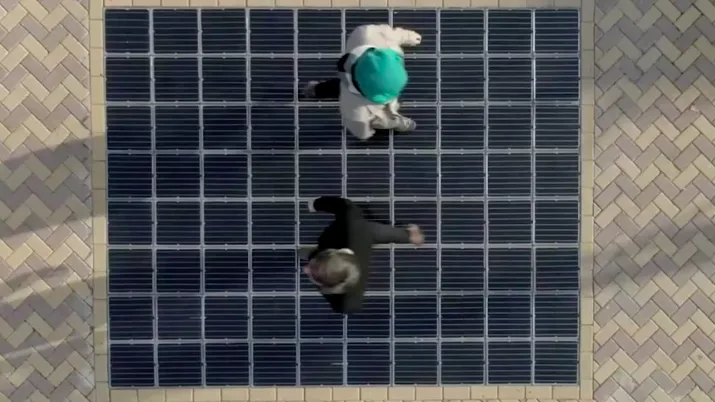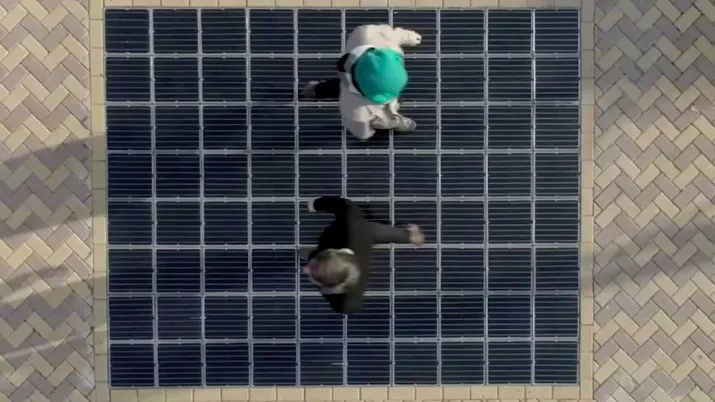
These solar pavements generate enough energy to power a building
A Hungarian tech company is turning plastic waste into solar-absorbing pavements, powering buildings and charging electronic devices.
BUDAPEST (Reuters) - A Hungarian tech company is turning plastic waste into solar-absorbing pavements, powering buildings and charging electronic devices. Francesca Lynagh reports. We’ve all heard of solar-panelled roofs, even solar-powered cars.
But what about solar pavements?
“Platio is a walkable solar panel pavement.''
Imre Sziszak is the co-founder and engineer at the Hungary-based tech company Platio.
He says just two meters squared of walkable solar pavement can provide enough green energy to power public lights and a USB charging station.
“We use recycled plastic which coupled with a modern solar technology provides a very strong and durable surface. Here you can see it in my hand. This grey part is the recycled plastic part. We use about 2 kilos of recycled plastic for one panel which we press in a composite form to get this plastic element, and we place the solar panel onto this."

A Hungarian tech company is turning plastic waste into solar-absorbing pavements, powering buildings and charging electronic devices. Credit: Reuters
The solar cells are protected with anti-slip, hardened glass tiles.
So walking across it – or even parking a car on it - won’t damage the technology.
But what’s the advantage in putting solar cells down on the ground versus on top of the roof?
“There are many cases when the users cannot put it on the roof, either because the bad position of the house, or because of the system or the roof structure, and in these cases ours is a very good alternative.”
“This pavement is comfortable, does not disturb the various tastes of people and it functions as a classic pavement but produces energy in the meantime.”
RELATED: Nuclear or renewables? 25-year study shows a clear winner
While they may be more pleasing to the eye for some, these solar pavements are still the more expensive option compared to roof panels - for now at least.
But Sziszak says that his small-scale projects are more durable.
“The reason why we use this size because this is the size with which we can guarantee that the glass will hold the weight. It is smaller size because the glass has a kind of bad habit of breaking due to electric discharge and during out tests this was the size with which we can guarantee that these panels will not break.”
The company’s largest instalment so far was built in front of a shopping center in Kazakhstan to power the building's air conditioning with clean energy.
Reporting by Krisztina Fenyo










